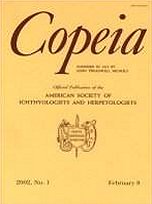The predator attraction (PA) hypothesis proposes that chemicals released from the skin (Schreckstoff) of an injured fish during a predation event attract nearby piscivorous fishes, which then compete for the prey. The confusion of this additional competition may allow the injured fish to escape. This is an alternate hypothesis to kin selection for the evolution of fish alarm systems, particularly in the superorder Ostariophysi. Schreckstoff is found in the skin of ostariophysans and some unrelated taxa, whereas muscle is not known to possess any unique pheromones. I tested the PA hypothesis using a natural assemblage of southeastern fishes. Micropterus punctulatus (Spotted Bass) were exposed to skin (Schreckstoff) and muscle (non-Schreckstoff) extracts from five co-occurring prey species, Cyprinella venusta (Blacktail Shiner), Pimephales vigilax (Bullhead Minnow), Gambusia affinis (Western Mosquitofish), Fundulus olivaceus (Blackspotted Topminnow), and Lepomis macrochirus (Bluegill). Micropterus punctulatus did not increase foraging behavior after exposure to skin extract from any of the five potential prey species; however, there was an increase in foraging behavior after exposure to muscle extract from C. venusta. The PA hypothesis was not supported by this study, and other influences on the evolution of this system are proposed.
How to translate text using browser tools
1 August 2004
Are Spotted Bass (Micropterus punctulatus) Attracted to Schreckstoff? A Test of the Predator Attraction Hypothesis
Mollie F. Cashner
ACCESS THE FULL ARTICLE





